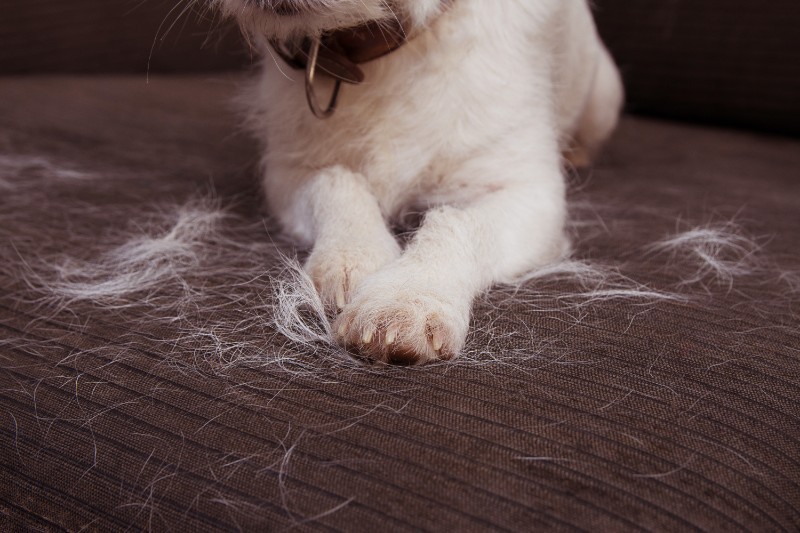What to Do When Your Dog Won’t Stop Shedding

Do you feel as though you’re constantly dodging tumbleweeds in your own home? Do you sweep up enough fur each day to stuff a pillow? Do you have so much dog hair on your clothes that you’re starting to lose hope? If this sounds like you, don’t worry – you aren’t alone! Shedding is probably the number one problem that pet owners struggle with on a daily basis.
If you’re tired of the constant “war on fur,” the team at Animal Medical Hospital & Urgent Care is here to help!
One Hair at a Time
The arrival of spring means dogs everywhere are shedding the excess fur they’ve built up over the winter. Getting a handle on shedding as early as possible is key to reducing cleanup later on.
- Brush, brush, brush – If you aren’t familiar with your pet’s brush, now is the time to get (re)acquainted. Removing excess fur with regular brushing is much preferred to sweeping, vacuuming, and lint-rolling every surface in your home. Our groomers can also recommend the right type of brush/deshedding tool for your dog. Aim for a daily brushing session (or at least several times a week).
- Regular grooming – Having your dog groomed with us will go a long way toward removing excess fur. We offer standard grooming services (including bathing, brushing, deshedding, fur and nail trims, ear cleaning, and anal gland expression), as well as a variety of extra special spa treatments. Our caring and professional staff specializes in helping pets look and feel their best!
- Quality nutrition – Nutrient deficiencies can contribute to excess shedding. Talk with your veterinarian about which brand of food is right for your pet, and ask about nutritional supplements (such as omega-3 fatty acids) that support skin and coat health.
Signs of Trouble
Although regular shedding is normal, excessive shedding is not. Allergies in dogs, whether caused by fleas, food, or environmental factors, can trigger more shedding than normal. Other symptoms of an allergic reaction include constant licking or biting at the paws, groin, or belly; red and irritated skin; and open sores or lesions.
If you’re concerned about your pet’s shedding or if they’re showing signs of allergies, please contact us right away. Allergies are uncomfortable and can put your pet’s health at risk. Your veterinarian will work with you to pinpoint the cause of your dog’s allergies and develop a plan to get them back on track.
